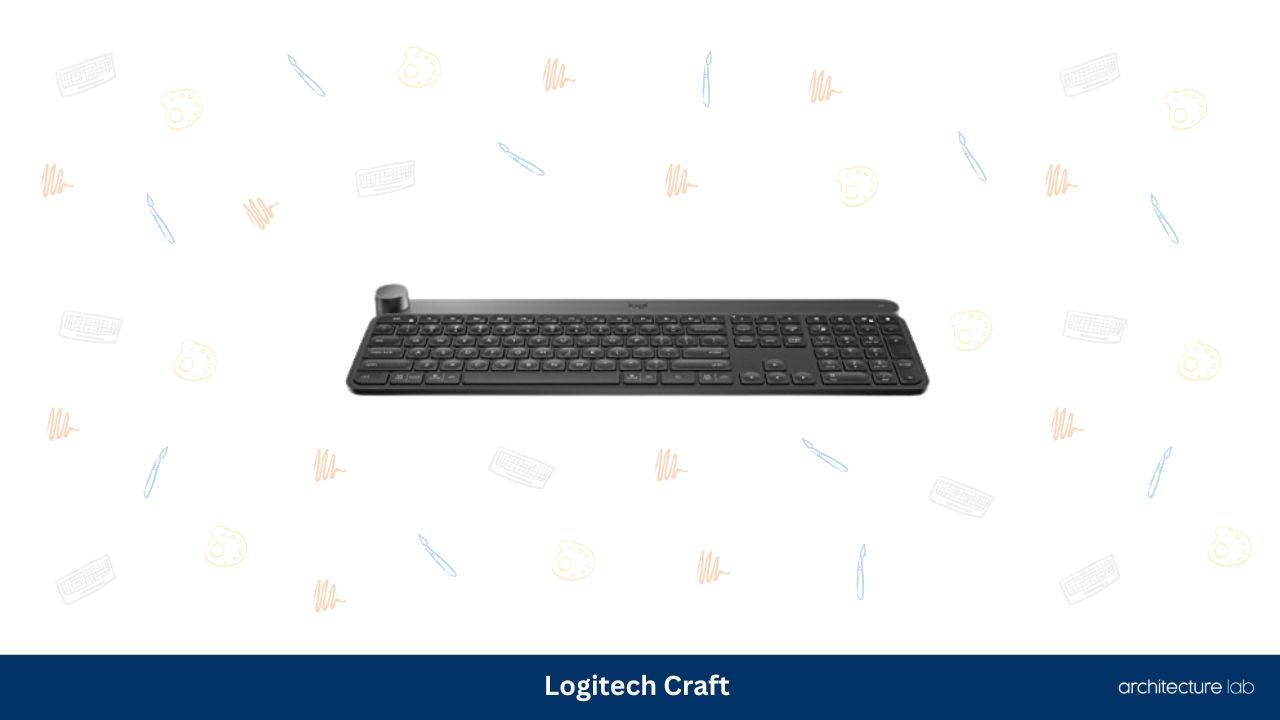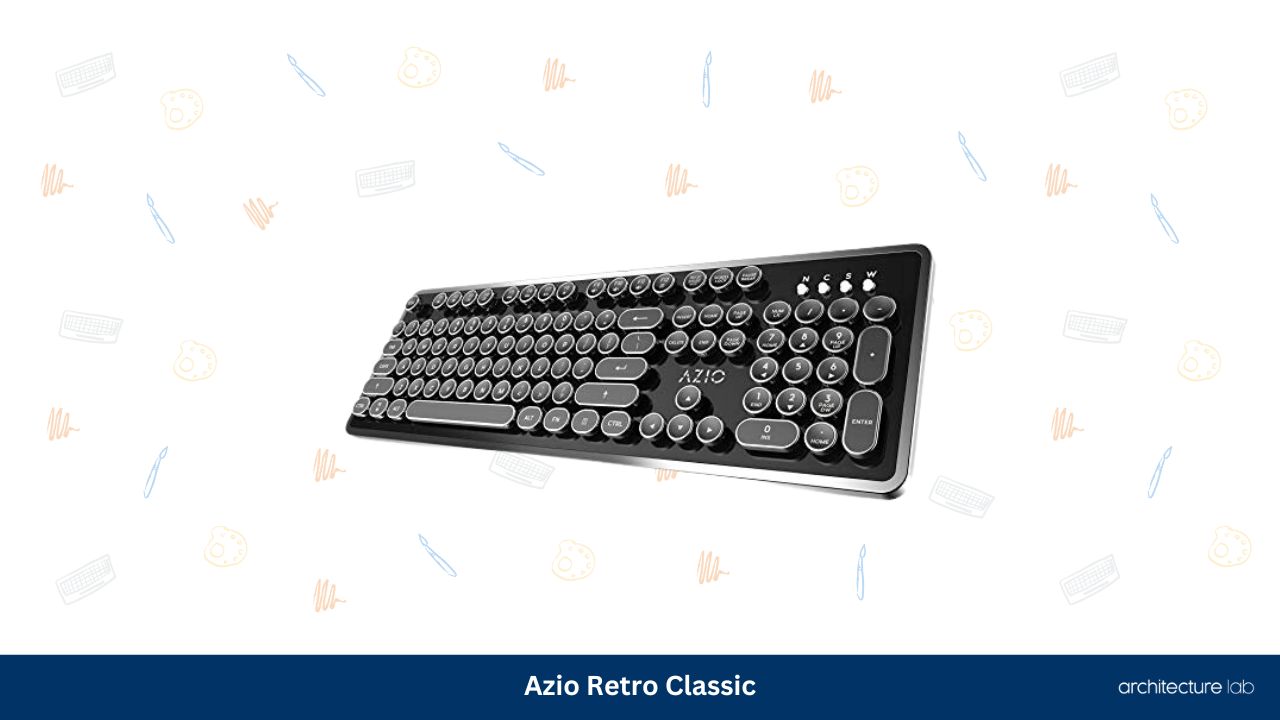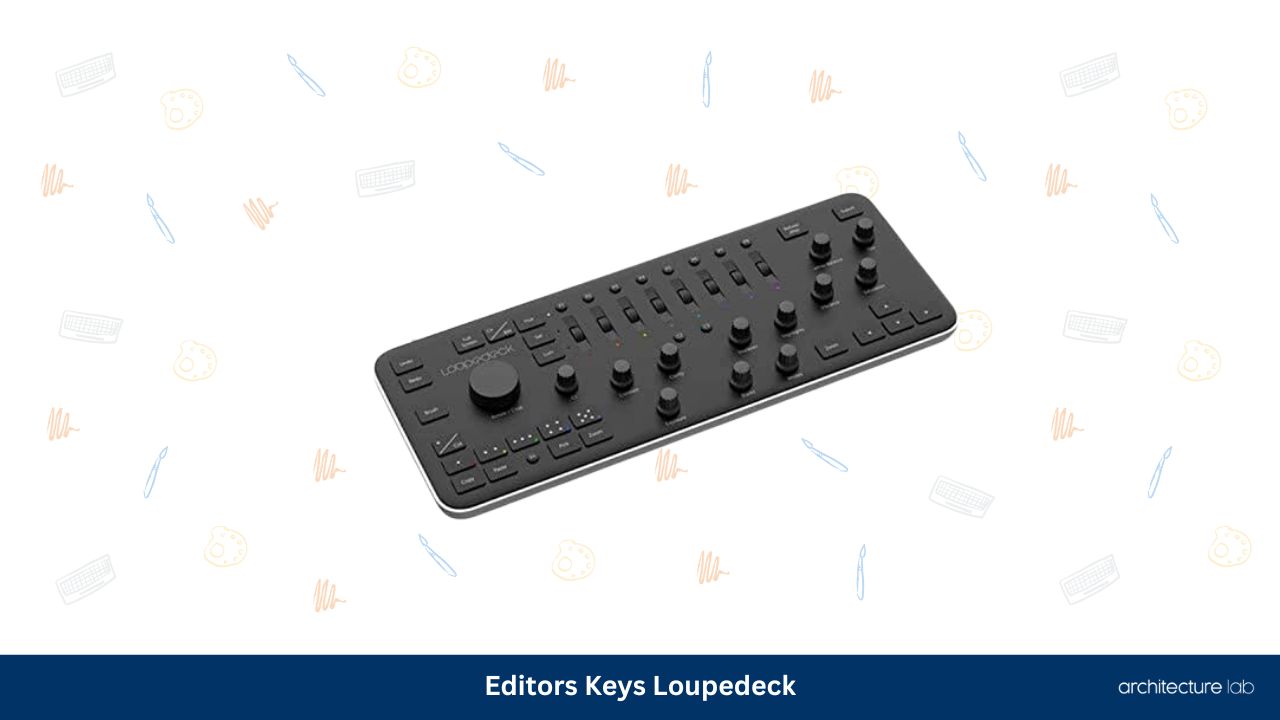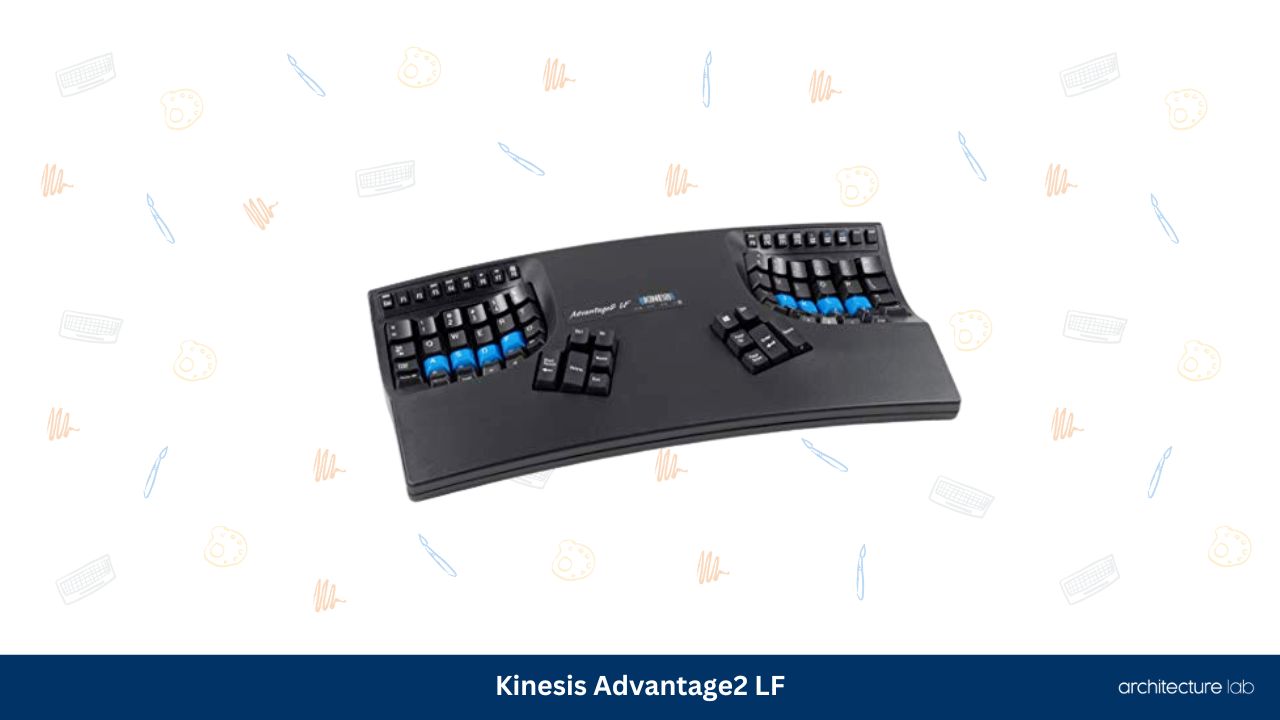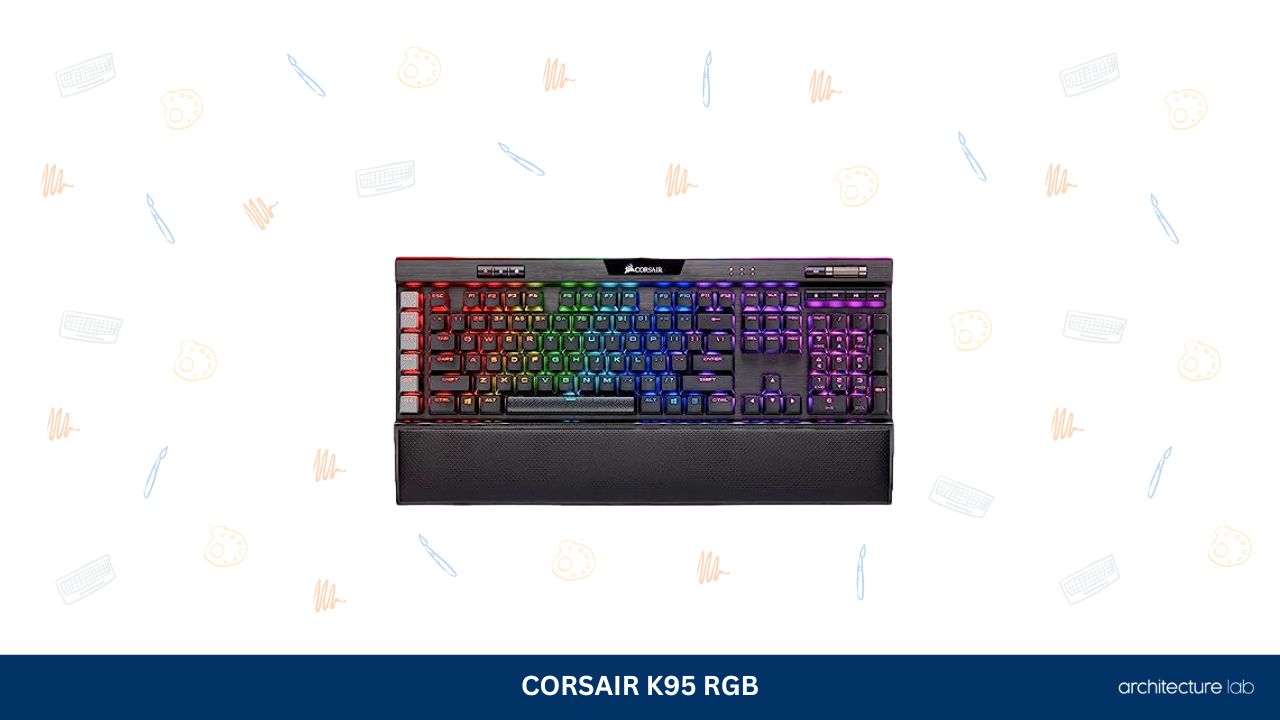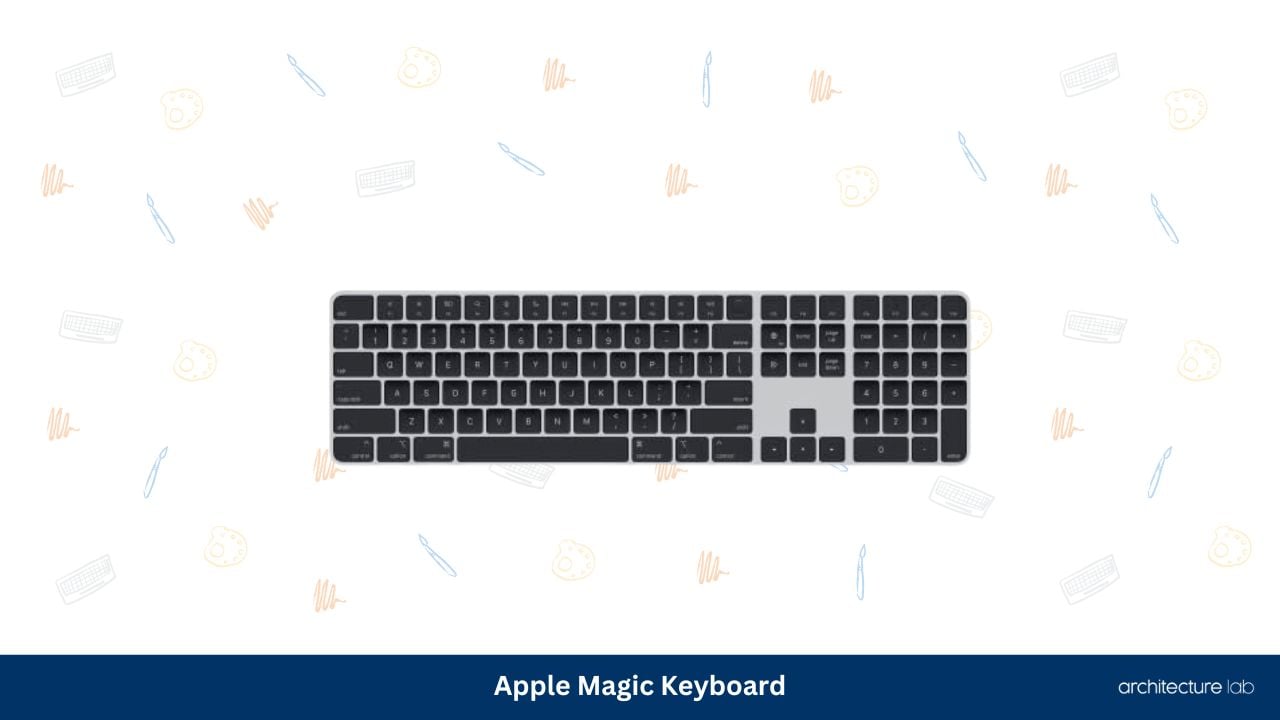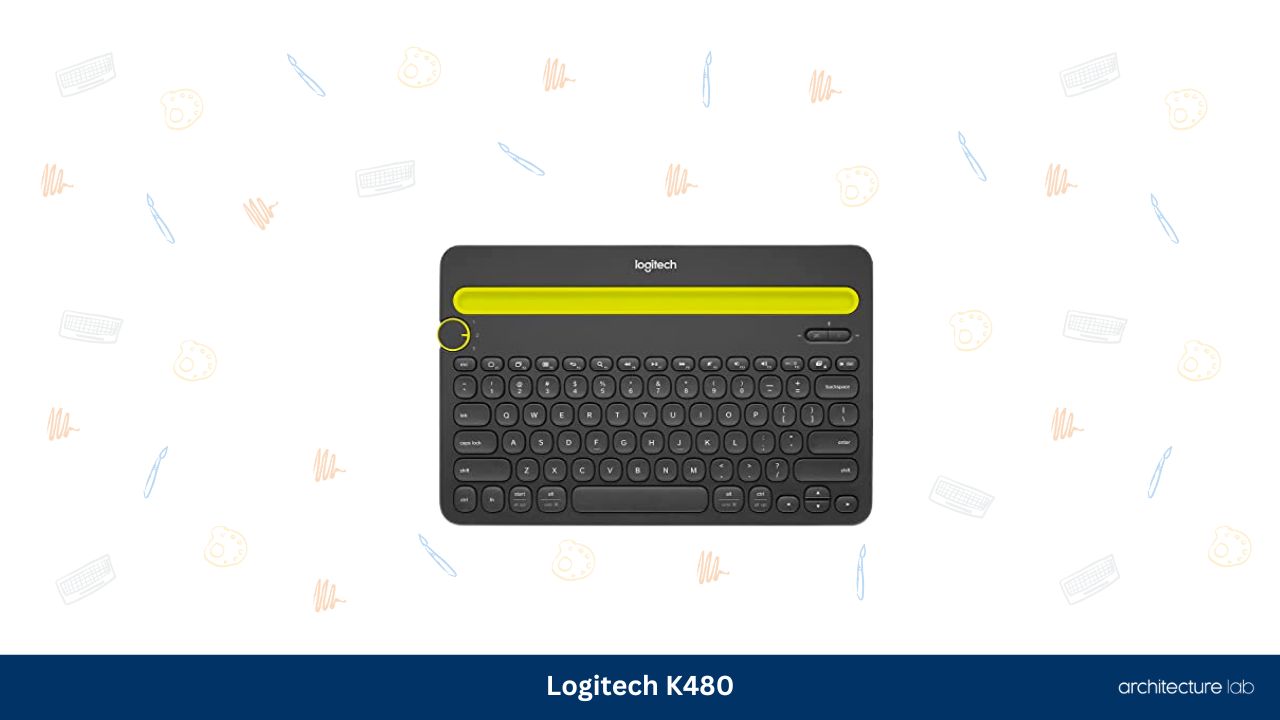While the tool does not make the artist, it certainly affects the way an artist works.
If you are a professional designer or are just starting out, you will know how the devices you use can affect the quality of your work. While a keyboard or a mouse can certainly not make you more or less talented than you are, they could surely help in unleashing your full potential.
And this is probably why several keyboard brands in the market are trying to cater to the various needs of professional designers, gamers, architects, etc.
So, in case you are planning on ditching your old keyboard for a gleaming new one or upgrading to one that suits your tastes and needs.
Best Keyboards for Designers
To help you out, here’s a list of the 7 best keyboards for designers available in the market today:
1. Logitech Craft – Best for Adaptability & Comfort
Logitech is one of the popular tech brands in the market. This keyboard model combines smoothness with comfort and ease of access. Its adaptive technology recognizes the software you are working with and changes accordingly to its need. This means that the input dial will shift to give you easy access to the functions specific to the application you are using.
For designers, this keyboard has some special perks. It will let you access the input dial to play around with the stroke weight of Illustrator CC. Also, when using Photoshop CC, you can adjust the brightness functions directly from your keyboard, and in InDesign, you can adjust layouts while easily navigating timelines on Premiere CC. And the perks are only getting started.
Then, there is also the fact that you can simply use the dial to access specific Office functionalities, including accessing templates on PowerPoint, creating charts on Excel, and playing around with font sizes and types on Word. Combine that with the responsive keys that work without making the slightest noise and you can say you have gotten yourself a very good deal.
The entire device focuses on clarity and accuracy so you can work smoothly and without the slightest distraction. The backlight adjusts according to your surroundings, and one touch of the button lets you connect to three devices at the same time.
What We Like
- Aluminum dial and spine adds to the durability
- Adjusts functions according to the software the user is working on
What We Don’t Like
2. Azio Retro Classic – Best Vintage Design
Next up on the list is Azio’s Retro Classic. From the time you first lay your eyes on this one, you will know that it is not like any other of its kind. In all its gleaming retro flawlessness, the design can be termed perfect. Visually, at least.
Talking about the design, one must mention the leather top plate that gives the keyboard a rugged yet classy look, with a kind of old-world charm to it. The satin-chrome and zinc-aluminum alloy body goes gloriously with the leather. The entire look, along with the clicking feeling the keys give, reminds one of working on an old-school typewriter.
If you are someone who is torn between buying a wireless or wired keyboard, this one has you covered. You can use the USB port to connect to your PC or just go wireless with Bluetooth connectivity. On the inside, it is fitted with a staggering 6000mAh battery that is rechargeable and easily lasts a year when the backlight isn’t on.
Further, you can adjust the tilt of the keyboard to fit the angle at which you prefer to work perfectly. There is also a pillar-ish foot at the back using which you can adjust the height.
What We Like
- Zinc aluminum alloy gives it durability
- The leather top plate has indicator light markings debossed before being printed with copper foil, making it even more detailed
- Balances old-school look with modern day comfort and class
What We Don’t Like
- Lack of programmable keys
- Loud switch sounds
3. Editors Keys Loupedeck – Best for Efficiency & Speed
Perhaps the first thing one notices about Editors Keys Loupedeck is how it seems to be designed with but one goal in mind, i.e., to fulfill all your design needs at the click of a mere button.
All the other keyboards on this list and many others in the market do try hard to make a designer’s work easier and smoother by helping them remain focused, but perhaps, it is only Loupedeck that does away with any extra frills and specs in exchange for speed, efficiency, and accuracy. It is designed not just to catch your eye, but to make sure you get to give your best.
For example, you can directly plug the Loupedeck in and start working on Lightroom without having to bother about the software’s own interface. You can directly get down to the editing part directly with this one as the dials, buttons, and knobs can all be customized to serve a specific purpose when using Lightroom.
Moreover, you can use the wheels and knobs to precisely edit your work by tuning the dial sensitivity up or down. You can also use the console to work with shadows, brightness, exposure, contrast, and clarity without having to fumble around with the software settings.
What We Like
- Takes away the need to use a keyboard or a mouse
- Each button or knob on the console can be adjusted to serve a Lightroom function
What We Don’t Like
- Has no wireless connectivity option
- There are no indicators for the brush button
4. Kinesis Advantage2 LF
The Kinesis Advantage2 LF is a specially designed ergonomic keyboard that aims to improve users’ comfort and productivity. Its unique design helps reduce strain on the hands and arms during extended typing sessions, making it a great choice for professionals who spend long hours on the keyboard.
Apart from its carefully optimized shape and programmable keys, the Advantage2 LF also features comfortable palm rests to minimize fatigue. The keyboard is compatible with Windows, Mac, Linux, and Chrome operating systems, providing versatility for users with different preferences. The typing experience on this keyboard is smooth and quiet, further enhancing comfort during use.
Although the Advantage2 LF offers excellent ergonomics, it has a bulky design that may not fit in all desk setups. There is also a learning curve associated with this keyboard due to its unconventional layout, which may initially hinder productivity.
What We Like
- Programmable
- Comfortable palm rests
- Optimized shape
What We Don’t Like
5. CORSAIR K95 RGB
The Corsair K95 RGB is a high-quality mechanical keyboard designed with gamers and graphic designers in mind. The keyboard’s eye-catching lighting effects and lightweight chassis offer a premium experience with a touch of flair.
The K95 RGB has a comfortable palm rest and USB connectivity that ensures a seamless gaming or design experience. The keyboard also features 110 keys, catering to different needs and enhancing its overall utility. The affordable price makes it an attractive choice in the competitive mechanical keyboard market.
Although it has considerable advantages, the Corsair K95 RGB has a couple of shortcomings. Its keycaps are relatively low, and there are limited upgrade options for users looking to improve their setup further.
What We Like
- Affordable
- Eye-catching lighting
- Comfortable palm rest
What We Don’t Like
- Low keycaps
- Limited upgradability
6. Apple Magic Keyboard
The Apple Magic Keyboard is a sleek, minimalistic device that has garnered a devoted following among graphic designers and Apple enthusiasts alike. Its design and functionality are tailored to blend seamlessly with macOS devices.
Notable features of this keyboard include both wired and wireless connectivity options along with an impressive battery life of up to a month after a full charge. The keyboard’s compact design saves valuable desk space without sacrificing usability.
Despite its advanced features, the Apple Magic Keyboard lacks backlighting, making it less convenient for use in dimly lit environments. Additionally, its price point is significantly higher than many competing keyboards.
What We Like
- Wired and wireless
- High battery life
- Compact
What We Don’t Like
7. Logitech K480 Keyboard
The Logitech K480 is a versatile keyboard designed for graphic designers and other professionals who value flexibility and functionality. Its compact size, compatibility with multiple devices, and ease of use make it an appealing choice for users who work across different platforms.
The K480’s standout feature is its ability to connect with Android, Windows, and Mac devices. Its affordable price point is another huge advantage, especially for users on a budget. Moreover, its instant switch technology ensures seamless transitions between connected devices.
While its versatility is noteworthy, the Logitech K480 is not the most compact keyboard available. Additionally, it lacks backlighting, a feature that could enhance productivity in low-light settings.
What We Like
- Versatile connectivity
- Very affordable
- Instant switch
What We Don’t Like
Best Keyboards for Designers Comparison Table
| Product | Connection | Key Switches | Backlighting | Programmable Keys | Special Features |
|---|---|---|---|---|---|
| Logitech Craft | Bluetooth, USB | Scissor Switches | Yes, adjustable brightness | Yes, with macros | Creative input dial with haptic feedback and adaptive lighting, touch-sensitive controls, ergonomic design with palm rest |
| Azio Retro Classic | Wired/USB, Bluetooth | Mechanical Switches | Yes, customizable | Yes, with macros | Vintage design with genuine leather top plate and metal alloy frame, customizable LED backlighting, NKRO, detachable USB cable |
| Editors Keys Loupedeck | Wired/USB | Mechanical Switches | Yes, adjustable brightness | Yes, with macros | Designed specifically for photo/video editing, customizable layout with labeled keys and color coding, ergonomic design with palm rest |
| Kinesis Advantage2 LF | Wired/USB | Cherry MX Switches | No | Yes, with macros | Ergonomic split design with adjustable tenting and palm supports, customizable layout with up to 48 macros, onboard memory for up to 100 unique layouts, foot pedal compatible |
| CORSAIR K95 RGB | Wired/USB | Cherry MX Switches | Yes, customizable | Yes, with macros | Customizable per-key RGB backlighting, durable anodized aluminum frame, dedicated multimedia controls, six programmable macro keys, 8MB onboard memory for storing profiles |
| Apple Magic Keyboard | Bluetooth | Scissor Switches | No | Limited programmability | Slim and compact design with low profile keys, optimized for macOS with shortcuts and function keys, rechargeable battery with up to one month of use on a single charge |
| Logitech K480 Keyboard | Bluetooth, USB | Scissor Switches | No | Yes, with hotkeys | Multi-device compatibility with support for up to three devices and easy switching, integrated device cradle |
Buying Guide for the Best Keyboard for Designers
It often is an interesting aspect when you are planning to buy keyboards, specifically for designing. Choosing from a sea of keyboards that are on the market can be a tough bargain. But, what exactly are you looking for?
Well, you want a keyboard that helps in designing, so you would want to check up on your criteria list. What does a designer exactly need from his keyboard that a regular keyboard cannot offer? It must probably be convenient enough for them to do their job smoothly.
Also, there are certain things that you should be looking for before pushing that investment. Here is a list that you would want to look out for before buying a keyboard that specifically caters to the purpose of designing; may not be necessary, but it primarily does so.
- Built-in shortcuts
Always comes in handy when you are designing. It makes it easier to work when you are meticulously designing something.
You would want it to be durable since keyboards usually take the stress that you are facing while designing a project. Make sure it falls through the test of time, especially if you like to use it for a longer time.
-
Aesthetics
Are also a major part of any peripheral. It needs to have that edge, but aesthetics don’t necessarily need to break your comfort factor. You can always go for a mechanical keyboard with RGB.
-
Ergonomic form factor
Must be there to reduce the amount of muscle stress. Make sure that your keyboard has that form factor so that it helps you during the long stressful hours of design backlogs.
-
Opt for a backlit keyboard
Adjustable illumination settings to help you pull through the night when the workload is heavy. It will help your work brilliantly, especially if you like to work in a dark room.
-
Make sure to have zoom sliders
These sliders help you get into those details that couldn’t be tended to because the mouse wouldn’t let to reach that level of perfection. Zoom sliders can also give you a feel of that intensity.
What should designers look for in a keyboard?
Designers should look for keyboards that are ergonomic, have customizable keys or shortcuts, and have a good tactile response. The keyboard should also have good compatibility with the designer’s software and operating system.
What is the best type of keyboard for designers?
The best type of keyboard for designers is subjective and depends on personal preference. However, mechanical keyboards are often recommended for their tactile response and durability.
Can a keyboard help with design productivity?
Yes, a keyboard that is designed for the needs of designers can help with productivity by providing shortcuts and customizable keys that streamline workflow.
What is the difference between a regular keyboard and a keyboard for designers?
A keyboard for designers often has customizable keys or shortcuts that cater to the specific needs of designers. It may also have an ergonomic design to reduce strain during long hours of work.
Are wireless keyboards recommended for design work?
Wireless keyboards are recommended if they have a good connection and minimal lag. However, some designers prefer wired keyboards for their reliability and uninterrupted connection.
Can a keyboard improve a designer’s accuracy and precision?
Yes, a keyboard that provides good tactile feedback can improve a designer’s accuracy and precision in executing their work.
What is the price range for a keyboard for designers?
The price range for a keyboard for designers varies but typically ranges from $50 to $200 depending on the features and brand.
Conclusion
As we reach the end of our journey exploring the best keyboards for designers, it is clear that there is no shortage of quality options to cater to different needs, preferences, and budgets. Throughout our analysis, we have considered factors like ergonomics, functionality, aesthetics, and versatility to ensure that these keyboards can help enhance productivity and offer a comfortable user experience.
Out of these 7 best keyboards for designers, here are the top three expert recommendations:
- Best for Adaptability and Comfort: The Logitech Craft is an ideal option for its smooth performance, intuitive input dial, and software adaptability that makes working with different design applications a breeze.
- Best Vintage Design: The Azio Retro Classic is a good option for those seeking a unique and captivating retro aesthetic without sacrificing modern functionality and flexibility.
- Best for Efficiency and Speed: Editors Keys Loupedeck is the right choice for designers who require seamless access to vital functions in software like Lightroom, as it offers shortcut keys, dials, and knobs specifically designed for quick and precise edits.
In summary, these keyboards have been carefully selected to provide an exceptional user experience for designers, offering a range of specialized features and benefits to help you work efficiently and comfortably. Whether you prioritize adaptability, aesthetics, or speed in your workflow, you can be confident that one of these top three recommendations will help you achieve your design goals.
Related Articles
Logitech Craft Review | Crowning the Queen of Keyboards

